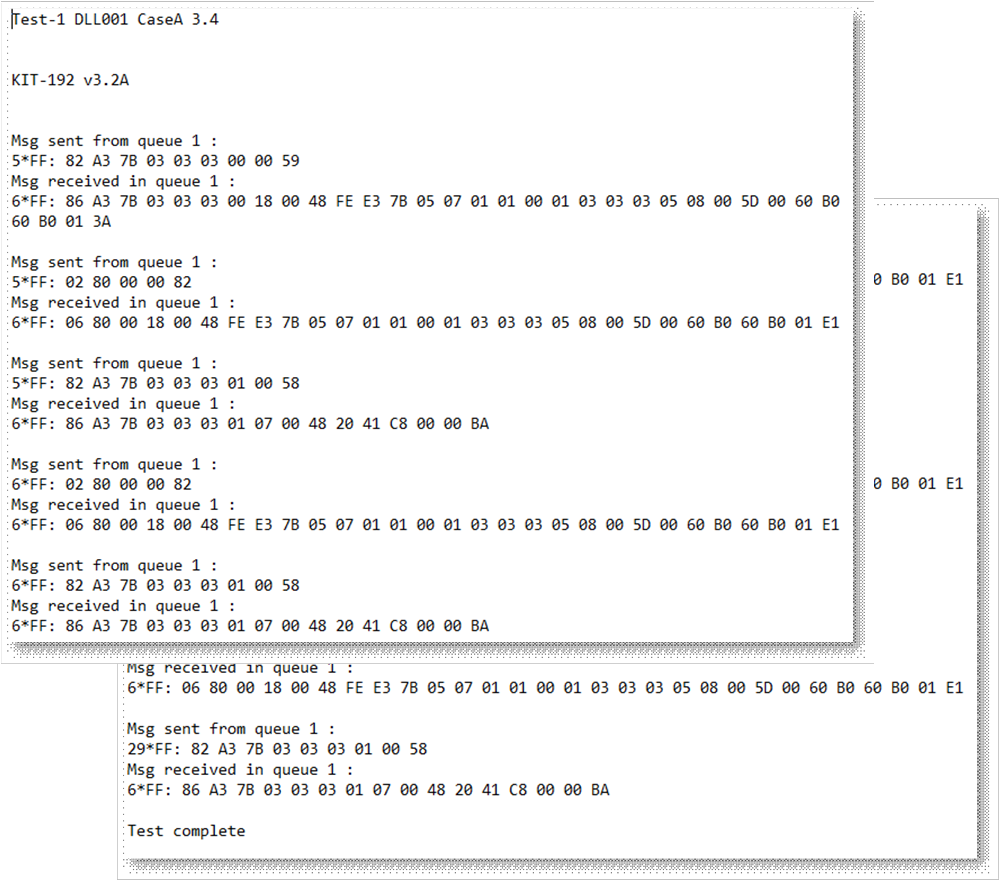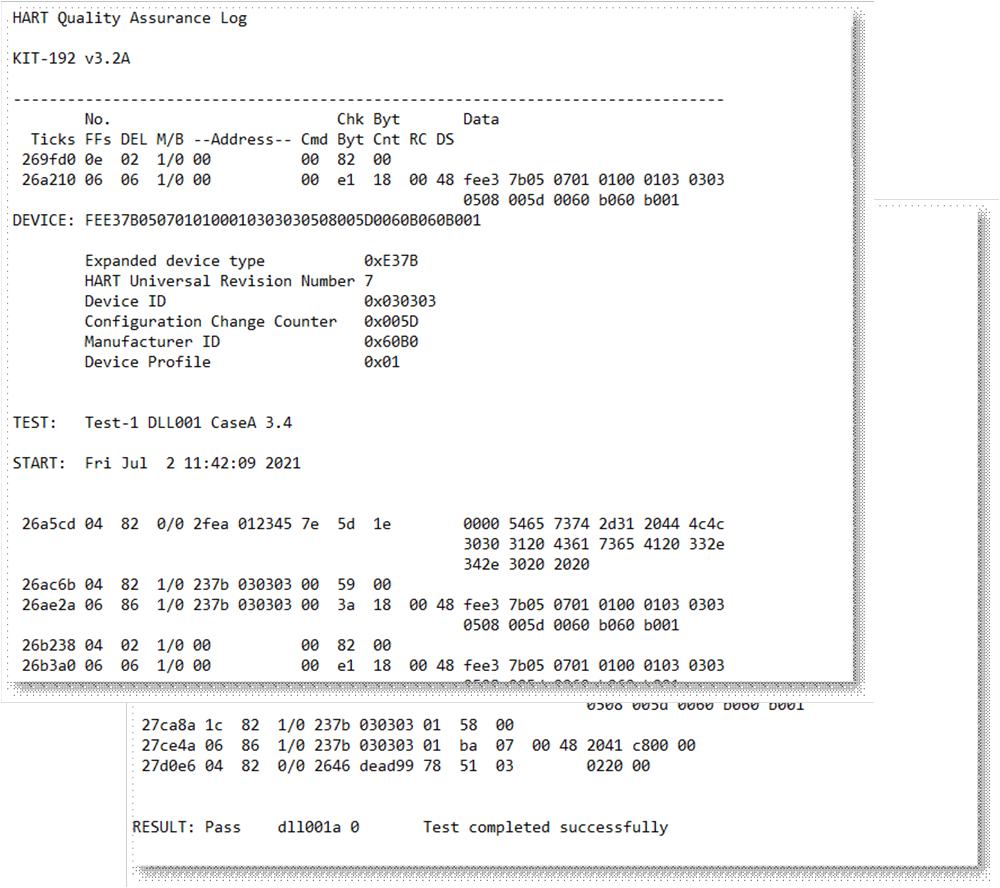SLAAEH8 October 2024 AFE781H1 , AFE782H1 , AFE881H1 , AFE882H1 , DAC8740H , DAC8741H , DAC8742H
- 1
- Abstract
- Trademarks
- 1Introduction
- 2AFE881H1 HART Modem
-
3HART Testing and Registration
- 3.1 HART History and the FieldComm Group
- 3.2 HART Testing Overview
- 3.3 HART Test Equipment
- 3.4 HART Physical Layer Testing
- 3.5 Data Link Layer Tests
- 3.6 Universal Command Tests
- 3.7 Common-Practice Command Tests
- 3.8 Device Specific Command Tests
- 3.9 HART Protocol Test Submission
- 3.10 HART Registration
- 4Other TI HART Modem Designs
- 5Summary
- 6Acknowledgments
- 7References
3.5.2 Data Link Layer Test Logs
When the data link layer tests are run, the HART test system opens up a HART sniffer window to view the commands and responses from the tester to the transmitter device. Figure 3-21 shows this HART utility window and gives a active reading of the HART communication as the signal occurs. The “Msg sent from queue 1” indicates that there is a preamble sent as a communication to the device. The preamble is followed by a delimiter, address, command, and error correction bytes from the HART test system.
 Figure 3-21 HART Sniffer Display From the HART
Tester
Figure 3-21 HART Sniffer Display From the HART
TesterWhile each of the data link layer tests are run, the HART test system generates a log that is used to show the communication and can be reviewed by FieldComm Group. Figure 3-22 shows a small segment of one of these logs.
 Figure 3-22 DLL Test System Logs
Figure 3-22 DLL Test System LogsThese test logs record which test is run, device information, the communication transaction with a time stamp, verifies the communication, and flags any failures. After all tests are complete, the HART test system generates a full set log files. These log files are zipped together and sent to FieldComm with the device registration request.